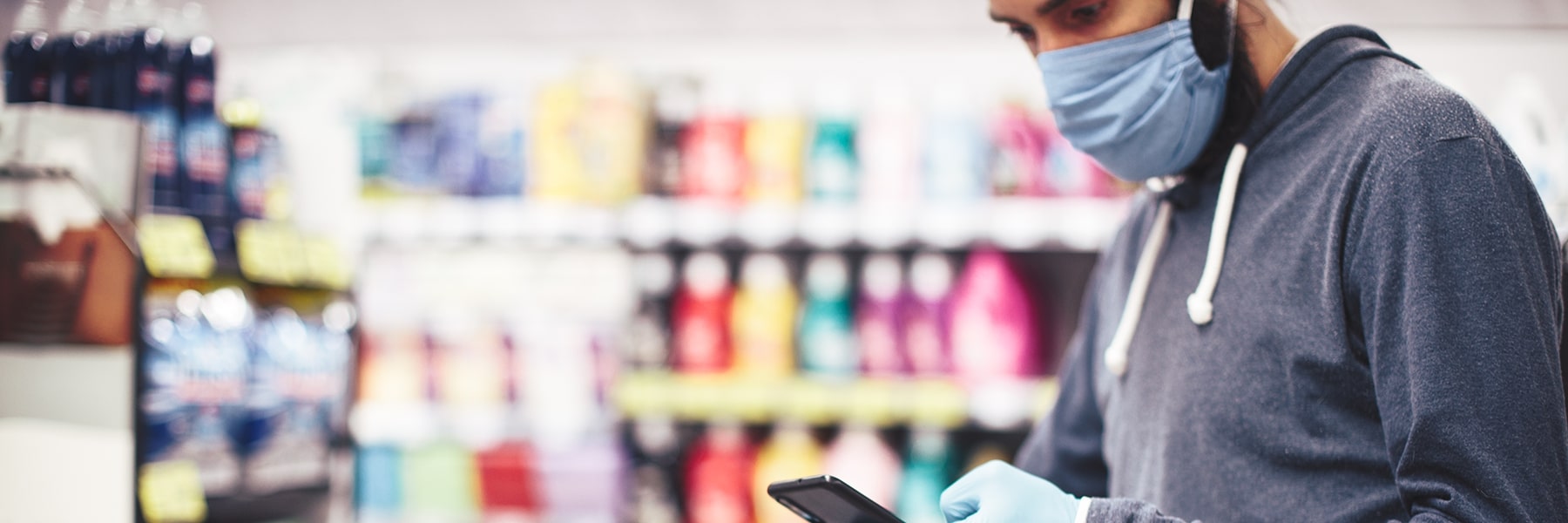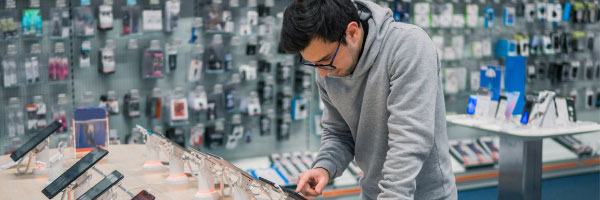How Smartphones Improve the In-Store Shopping Experience
Harnessing the potential of e-commerce is a high priority for most B2C businesses because consumers have been clear about their expectations: they want shopping to be easy, and that’s exactly what e-commerce delivers. The moment an impulse strikes, consumers can research products, compare prices, and make purchases – all in less time than it takes to order a latte.
However, in the push to develop and implement new, more advanced e-commerce technology, other opportunities tend to be overlooked. Specifically, innovative smartphone retail technology that can enhance the in-store experience, which boosts sales and encourages repeat business.
These are five examples of smartphone-based technology that get high marks when it comes to boosting the in-store shopping experience of mobile-first consumers:
1) Digital Coupons
Let’s be honest. No one is interested in clipping paper coupons these days. However, customers still like to save money. More importantly, as retailers know, discounts and coupons are key for attracting customers to the store, generating interest in new products, and encouraging impulse buys.
The answer is digital coupons, which offer all of the savings with minimal friction. Customers can look through store apps and select discounts of interest or load coupons from major brands. When it’s time to check out, the selected coupons are applied automatically. Customers simply scan their loyalty cards or pay through the retailer’s app.
Digital discounts ensure retailers get all of the benefits of coupons without the hassle, cost, and waste of printed material. Meanwhile, customers are delighted with saving money if it doesn’t involve hours of sorting, clipping, and organizing physical coupons.
2) QR Codes
There is a limit to how much reading customers want to do while shopping, so posting detailed product and store information is rarely effective. The same goes for collecting analytics on in-store behavior, which is a problem if you want to collect customer information or keep in touch through social media. QR codes aren’t particularly new from a technology perspective, but their application in retail settings is exploding.
Brands are adding QR codes to packaging so that customers can access coupons, discounts, and product information instantly, without typing in lengthy web addresses. Adding QR codes to printed marketing materials makes it simple for your customers to connect with you online or sign up for your newsletter.
Some retailers have successfully implemented QR code-based payment systems that eliminate the need to carry cash. These have been met with great enthusiasm by time-strapped patrons. In short, this technology offers a variety of ways to help your customers get in and out of a store quickly, while simultaneously building your relationship – a win/win.
3) Contactless Payments
Contactless and touch-free payment solutions were already going mainstream when the COVID-19 pandemic hit. Now, it’s the rare retailer that doesn’t offer at least one contactless option. Essentially, this technology works through credit cards embedded with radio frequency identification (RFID) chips. The contactless cards don’t need to be inserted or swiped at the payment terminal. Customers need only hold the card near the terminal for it to be read – and in many cases, it can be read through wallets so there is no fumbling to find the right card, which further decreases the amount of physical “touch points” within a retail environment.
Contactless cards are available from many traditional financial institutions, but there are plenty of ways that customers without credit cards can participate. A number of services such as ApplePay connect directly with bank accounts, so all you have to do is scan the app. In addition, many retailers offer contactless payments through their own branded apps, which are connected to customers’ credit or debit cards. The convenience and time savings of such payment methods make them a must-have option for brick-and-mortar retailers.
4) Scan-and-Go Technology
Many retailers are having trouble wrapping their heads around the idea of cashierless stores. However, the concept has gained some traction since Amazon Go debuted its first location. Consumers are on-board since it means skipping the checkout line altogether. The consensus is that less time spent at the register and more contactless payment opportunities would dramatically improve their shopping experience.
Essentially, the technology works by allowing customers to scan each item as they take it from the shelf. When they have what they need, they check out through the scan-and-go app as they walk out the door.
The biggest issue, of course, is how to ensure that theft doesn’t get out of control. Unfortunately, even the most technologically-savvy retailers haven’t yet found a foolproof solution. It appears that the answer lies with an automated monitoring system that can “watch” what customers take versus what they pay for. However, though the technology exists, it is not yet effective enough to keep shrink rates down to an acceptable level. That doesn’t mean this technology is out of place in your store – just that it should be used with caution while developers continue to perfect inventory security systems.
5) In-store Navigation/Wayfinding
GPS has transformed the traditional road trip. Instead of fiddling with maps or trying desperately to remember directions, mobile apps give dynamic navigational guidance in real time. This eliminates distractions, prevents lengthy and time-consuming detours, and ensures that no one has to experience that sinking sense of dread that comes with realizing they’re lost.
The same concept applies to in-store retail technology that offers navigation assistance. Consider this: big box stores are exceptionally popular for their wide selections and low prices, but the downside is that it takes a lot of space to house all that product. It’s not uncommon for patrons to find themselves wandering up and down aisles, looking hopelessly for a particular item. This problem is acute enough that it will cause some consumers to abandon big box stores for smaller retailers that provide a less frustrating in-store experience.
The problem is so widespread that there are entire social network communities dedicated to the discussion, but all of the angst is completely unnecessary. In-store navigation has gotten so advanced that apps show where to find an item, whether it’s in-stock, and if any applicable promotions, discounts, or coupons are available.
Forward-thinking retailers have taken this technology a step further by offering shopping suggestions based on a consumer’s in-app queries. The options are nearly limitless. Grocery stores can guide customers through finding all of the ingredients that go into a particular recipe, and home improvement stores can create shopping lists for specific projects, then show DIY-ers where to find each item.
From a customer experience perspective, smartphone retail technology is transformative. Instead of feeling frustrated because there are no employees available to assist or too much time is wasted searching, customers are empowered. In the case of apps that offer ideas and suggestions, your customers might even feel inspired – which can lead to lucrative impulse purchases. Associating your businesses with those positive feelings builds customer loyalty that ultimately grows your bottom line.
To help retailers respond and satisfy increasingly safety-conscious in-store shoppers, Smith Micro developed novel touchless functionality for its retail display management platform, ViewSpot®. Read the press release to learn more!






